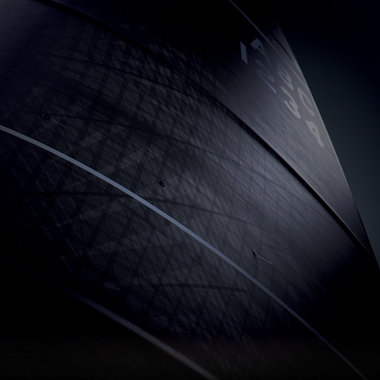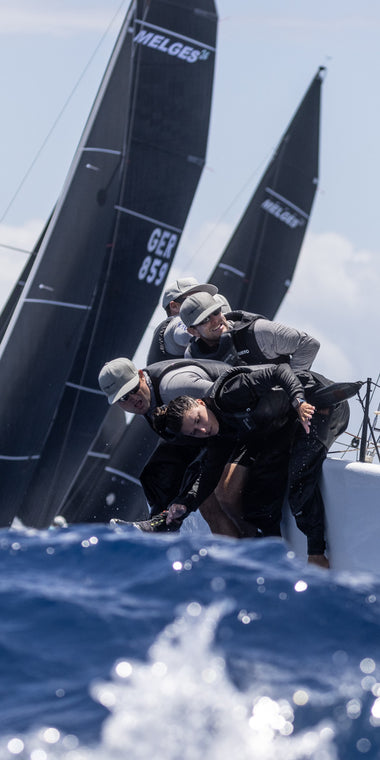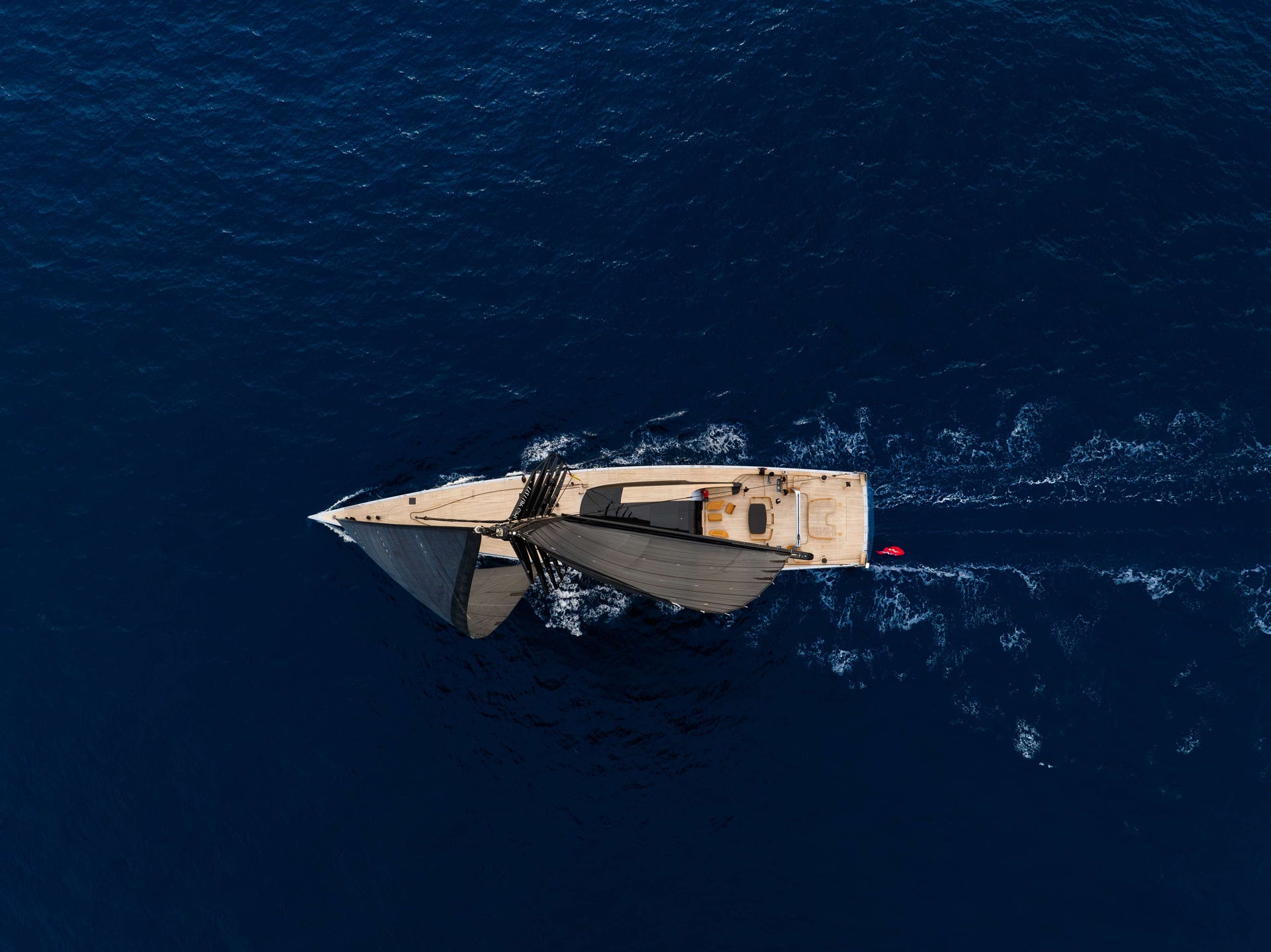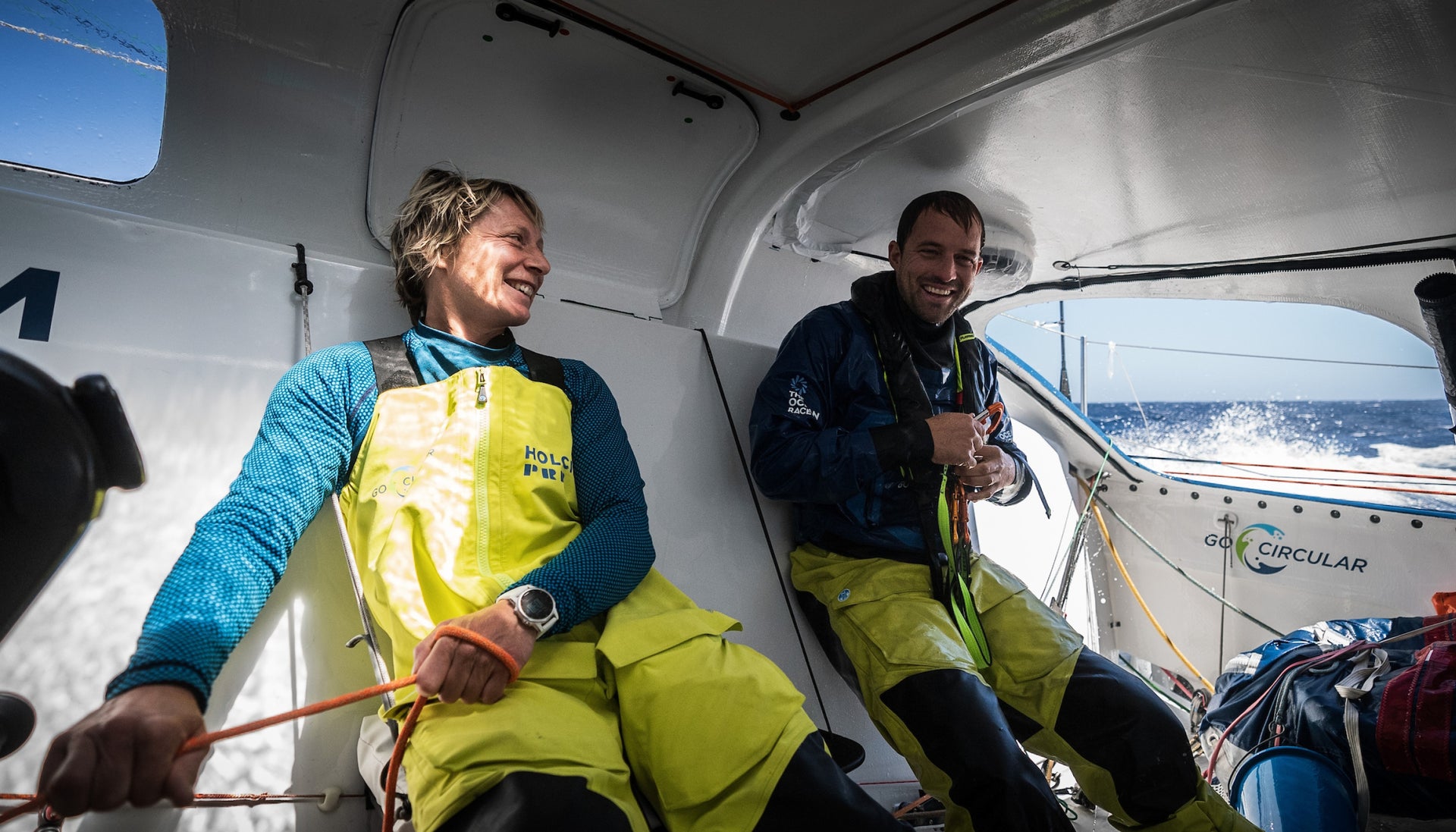OK DINGHY TUNING GUIDE
North Sails expert Charlie Cumbley provides a detailed run-through on how to get the most out of your OK Dinghy sail. This guide will help to get your mast set up correctly for a North sail, looking at mast rake and mast position at deck level. For each of the settings, there will be a suggested range to suit different conditions, sailing fitness levels, and styles. Please use this as a guide; it’s not gospel as everyone will have a slightly different idea on how the boat should feel. By measuring these positions and getting within these ranges, you will be able to be competitive and also accurately reproduce your settings. As we learn more about the OK Dinghy or any other One Design class, new information regarding setup, tuning, and trimming techniques will be updated on the class page.
MAST POSITION AT DECK
The position of the mast at deck level will have a major bearing on how much rudder angle or weather helm your setup will produce. For any given mast rake, you can move the mast forward or aft in the boat by moving both the mast heel and deck adjusters the same amount. By moving the mast forward, you move the center of effort of the sail plan forward which will reduce the amount of rudder angle and feel. Likewise, moving it back will increase that rudder angle and feel. This position will vary depending on the boat type, foil shapes, sail shape, and conditions you are sailing in. As a rule of thumb, if you generally sail on flat water and/or light airs, you will want to move the sail plan back in the boat as this increases helm and will help you achieve a ‘high mode’ when sailing upwind. Conversely, if you are sailing in choppy/rough conditions and/or stronger winds, then you will prefer to reduce the amount of helm and rudder angle to allow for a faster lower mode upwind. As a result of this, the deck position often varies from boat to boat and depends on a sailor's preferred way of sailing. For an Ovington with a North Sail, Charlie's all-purpose measurement is 3270mm. Move the rig back 15mm to 3255mm for a flat water/light airs venue.
We recommend you measure this deck position as shown in the pictures below; measured from the aft edge of the deck ring to the aft edge of the transom.



MAST RAKE
The most traditional way to set up mast rake is to simply hoist a tape measure up on the main halyard to the top band. To make sure you are as accurate as possible each time, once hoisted, measure down the mast to the top edge of the bottom band by the gooseneck. The tape should read 5400mm. Use the tape to measure to the top of the transom - the most popular range varies from 6100mm to 6200mm. This range depends on wind conditions, sea state, and mast stiffness. In theory, you would be looking for a more upright mast in ‘max power’ conditions and flatter water, but this will depend on your own body weight and hiking fitness. In the lighter airs, you would generally opt for a more raked aft setting to reduce leech tension and increase weather helm. We would advise a setting in the middle of these for the windy setting. Once you get overpowered from your max power setting, dropping the mast rake back a little will help the sail twist open and depower as well as allow for a faster, lower upwind mode which will be needed in these windier/rougher conditions. The downside with measuring the mast rake in this manner is it does not allow for the variation in mast bend, in particular the fore/aft tip deflection. For example, if you have a mast with an f/a tip deflection of 480mm (measured in the normal manner with 10kg) and you set up the mast rake with a measurement of 6150mm, for any given upwind sheeting position (i.e with the boom end ‘1 booms depth’ from the deck), you will have more leech tension than if you were using a mast with an f/a tip deflection of 540mm. It's this leech tension that is a critical factor for your upwind performance, so we recommend an alternative method for measuring mast rake which is used extensively in the Finn class. This method is shown below.
HOW TO MEASURE LEECH TENSION
Rather than measuring your mast in a straight line ‘tip of mast to transom’ as described earlier in the guide, this system measures what tension would be put through the leech of the sail. This allows you to get more accurate settings and go afloat with a good idea of how open your leech will fly (leech twist). It will also allow you to interchange different masts and set the leech profile to the same setting no matter how different your masts may be. You can use any of the different spring/digital gauges currently on the market; Persola Spring Balance, Devoti digital strain gauge both work perfectly well. We have used the Persola spring balance in this guide.
1 - Attach tension gauge and long tape measure to mainsail halyard. Hoist halyard until the tape measures 5400mm when pulled taught down the mast to the top edge of the bottom mast band. Pull some tension onto the gauge at this point and remeasure this hoist once the halyard has bed in.

2 - Attach tension gauge onto the outhaul.
3 - Tie the traveler out to the side deck, the furthest it can be from the centreline (so the boom is positioned on the edge of the gunwale when pulled to the deck in stage 4).
4 - With the mainsheet, sheet the boom to the deck (NOTE: Always use the same side of the boat for measuring tensions. Always measure with boom end on side of the boat).

5 - Take measuring tape and measure to the inner edge of the boom black band. Adjust the outhaul so that the tape reads 5425mm when held taught.

6 - Read the numbers on the gauge to see what the mast is set up at - this is your leech tension.

Quick Tuning Table
| Helm Weight | <6 knots - Superlight | 5-10 knots - Light/Medium | All Purpose | >18 knots - Strong |
| >95kg | 75lbs/34kg | 79lbs/35.8kg | 84lbs/38kg | 82lbs/37.2kg |
| 85-95kg | 72lb/32.6kg | 76lbs/34.5kg | 82lbs/37.2kg | 80lbs/36.3kg |
| 75-85kg | 72lb/32.6kg | 75lbs/34kg | 80lbs/36.3kg | 77lbs/34.9kg |
To adjust the tension, you can either move the chocks at deck level or move the foot of the mast (approximately 1mm chock at deck is equal to 1lb/0.5kg leech tension). Always re-check the tension after changes. This system also helps when trialing mast position fore/aft in the boat to maintain consistent leech tension. This guide will help maximize the performance of your North sail. If you have any queries, visit the OK Dinghy class page to contact any of the class experts. Check out the videos below for a detailed tuning run-through with Charlie. Happy sailing!
















